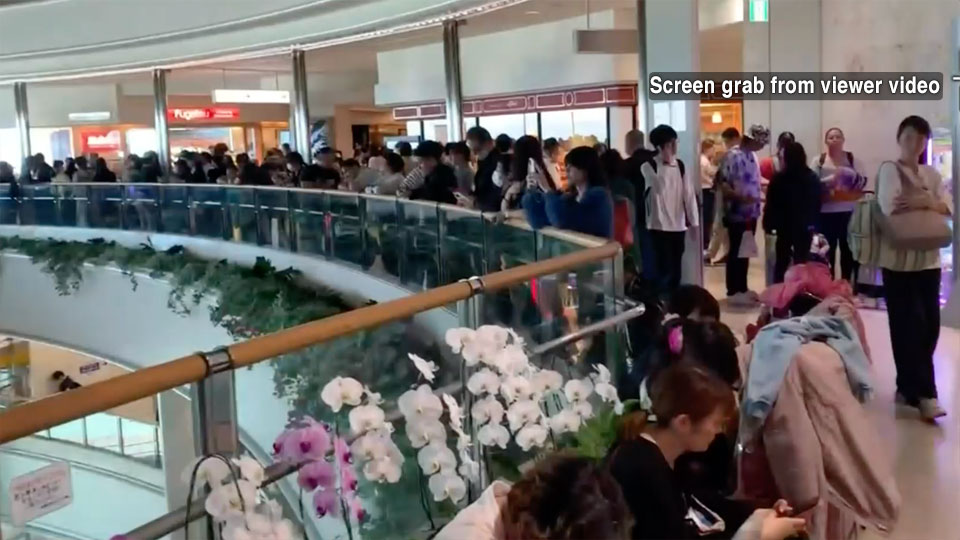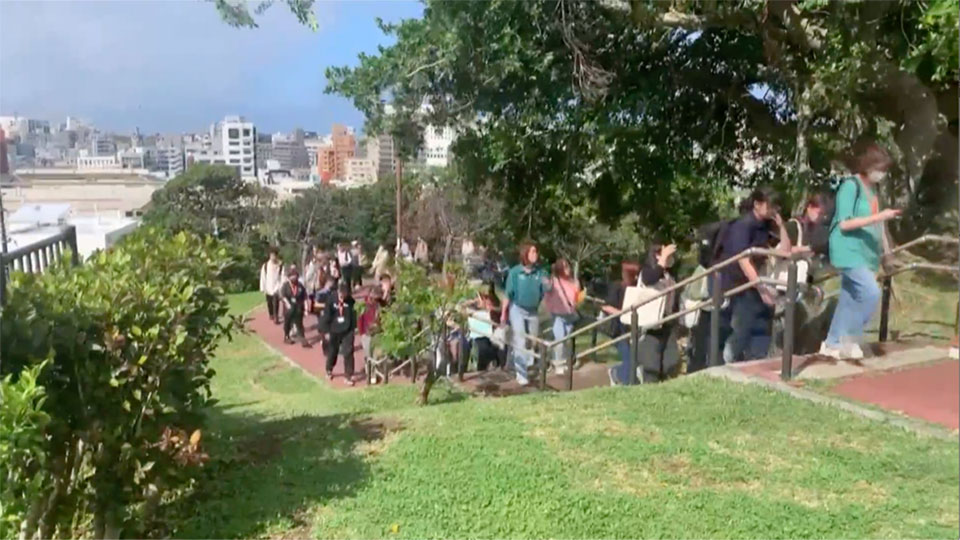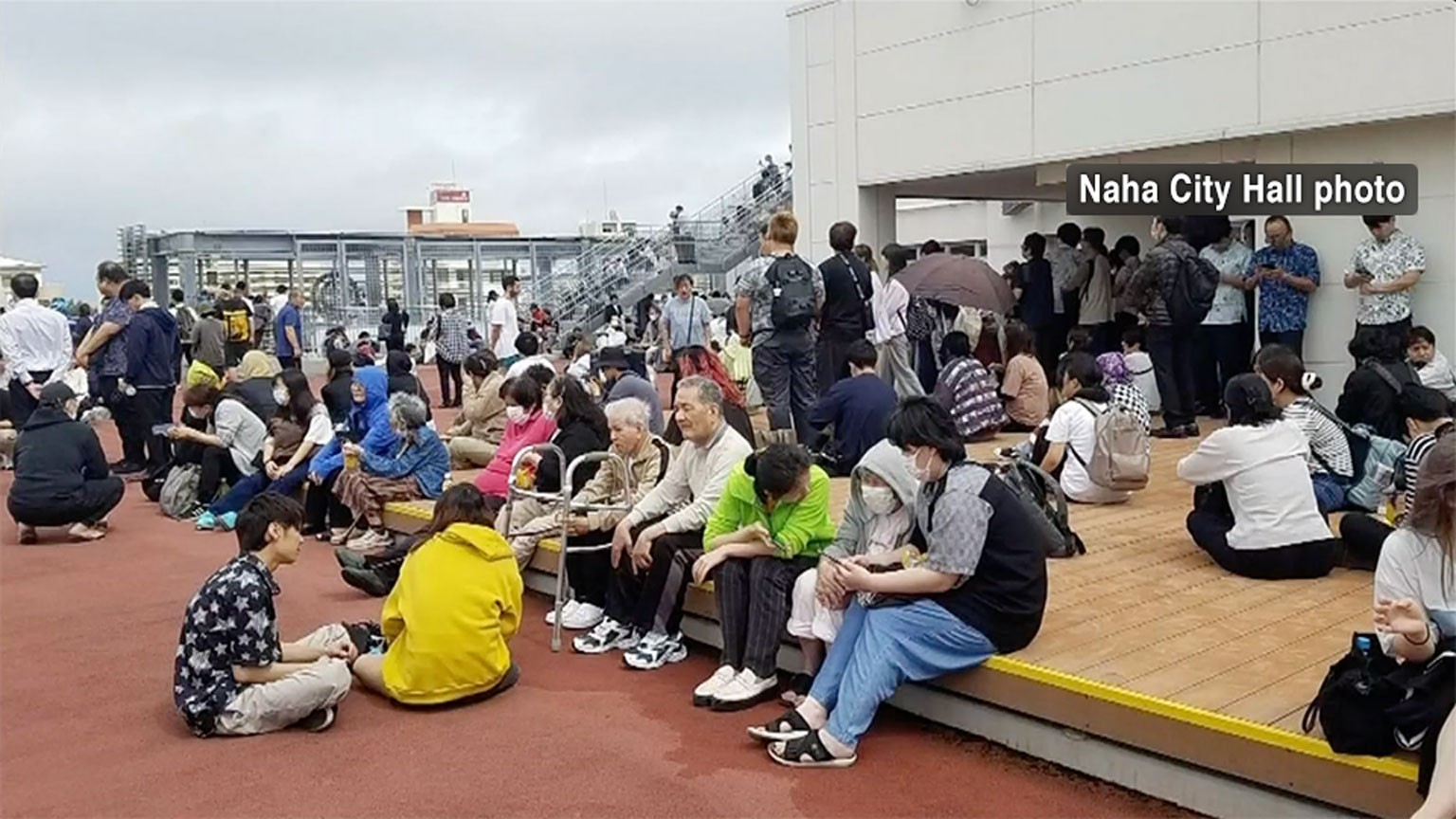According to airline companies, 98 flights to and from Okinawa were cancelled. All operations at Naha airport, the largest, were suspended, and people were urged to move to the 3rd or 4th floors of the building.

Ishigaki, close to Taiwan
2011 was the last time a tsunami warning was issued for Okinawa, following the massive March 11 earthquake that struck off the Tohoku region and set off huge waves there.
On Ishigaki Island, which is close to Taiwan, the warning prompted people to clear away from the ferry terminal and move to higher ground.

Okinawa main island
In Chatan Town, traffic came to a standstill. A man who talked to NHK said he was scared about making the wrong decision, whether he should get out and go by foot, or stay in his car. His heart was pounding, he said.

NHK was allowed to go inside a "tsunami evacuation building" near Naha Port after the tsunami warning and a later advisory were lifted.
This building is usually used as a community center, but it functions as an evacuation center in the event of wind and flood damage such as tsunami, typhoons and storm surges.

It holds a supermarket which will supply food and other necessities in an emergency. The structure is 25 meters high. A gentle slope leads to a large space on the rooftop.

About 850 residents and tourists evacuated to the building to seek safety on Wednesday.
The structure also holds a storage space for emergency supplies.

Throughout Naha, there are stockpiles of emergency supplies sufficient for about five percent of the roughly 316,000 population. These include tents and toilets as well as food and drinks. Officials said water was distributed to the evacuees on Wednesday.
An official with Naha's disaster and crisis management division says many people sought safety, probably driven by alarm.
He says, "Fortunately, nothing serious happened. And it is a good thing that so many people evacuated to safer places in their communities."

Expert: Using vehicles to evacuate can be dangerous in a tsunami
Sato Shosuke is an associate professor at Tohoku University's International Research Institute of Disaster Science.
Sato says the earthquake that struck the Noto Peninsula on New Year's Day made people more aware of the risk of tsunami and prompted them to act fast.
He says there are a lot of visitors in Okinawa right now because of the spring school holidays. But the announcements made by the authorities and staff at transportation facilities and surrounding places prompted them to get to safety smoothly.

Sato, however, expressed concern about the roads jammed with people trying to flee by car.
An NHK crew was in Ishigaki City shortly after 9:00 a.m. Japan time, not long after the tsunami warning was issued. A major thoroughfare in the city was already full of vehicles, and traffic was moving at a crawl.
A number of roads in Naha City were also clogged after the tsunami warning was issued.
Sato warns, "There were numerous serious traffic jams. If tsunami waves actually stuck, many people would be engulfed."
He advised people in each community to actually try and see how far they can evacuate on foot on a regular basis, and only resort to using a car if they figure there won't be enough time to reach a safer place in the event of an actual disaster.
